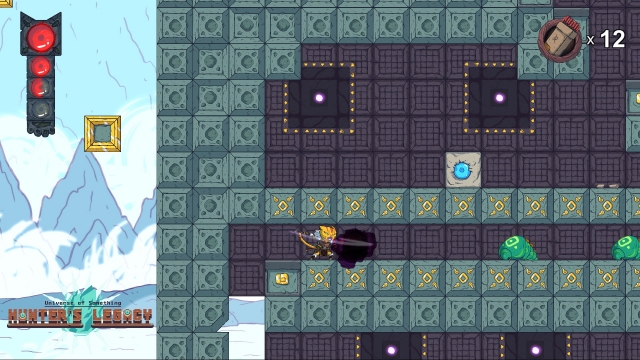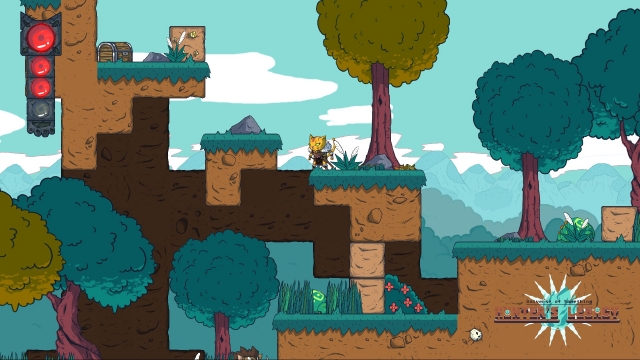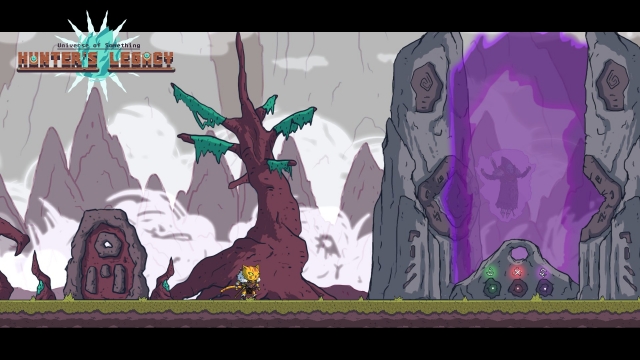
Hunter's Legacy Review
It was going to happen sooner or later – the internet is infamous for its feline photos, videos and GIFs, and so with Hunter’s Legacy, we can add Metroidvania-Style Platformers to the list. The player takes control of Ikki as she hunts down a magician to retrieve an ancient stolen artefact, making full use of her twin swords, bow and any number of abilities that she attains along the way.
In true Metroidvania fashion, Hunter’s Legacy is hard as nails, and even some of the earlier levels will put the player’s skill to the test. Whether it’s a case of a difficult platforming section, an infuriating puzzle or combat with many of the hostile creatures in the world, the game will ask you to think on your toes and put all of your powers to good use. Let me be the first to say that the absence of any life system is very welcome – one particular level had me riding wind currents through a spiky maze on nothing but a leaf, and I couldn’t even begin to say how many times I died. This game is fantastic in the way that every challenge is still made to feel doable, and the player is incentivised to carry on their plight in spite of massive failure. I found that as I became more frustrated at my many deaths, I began to develop a rushed, careless playstyle that only made matters worse. The game isn’t particularly fast paced, and so playing through with a clear head and patient mind will get you much further than if you develop the “run to the next checkpoint” philosophy.

One thing that really stood out to me while playing was the game’s level design. I’ve had problems with 2D platformers in the past in terms of knowing where I am and where I need to go, but Hunter’s Legacy always managed to push me in the right direction without outright telling me which way to travel; that’s pretty impressive when the game forces players to backtrack and explore interconnected areas multiple times. Each unlocked ability will allow new paths to become traversable, so checking back on those earlier levels will often yield more than they did during your first trip. The environments that the game has you plough through are so different from one another that unlocking a new area was always exciting. My favourite in particular involved heavy use of ice and fire, both of which would cause damage if interacted with for too long. I had to use my knowledge of the level and the enemies around me to try and balance my temperature and prevent myself from coming to harm. I was absolutely stunned at how effectively this mechanic was implemented, and couldn’t help but scratch my head and ask “why have I never seen this used before?”

Combat is very basic, consisting of close-range sword combos and dodge-rolling, while flying enemies and the odd switch can be dealt with using the protagonist’s trusty bow. Souls veterans beware – Ikki doesn’t have the luxury of invincibility frames, meaning that many enemies need to be rolled away from during their attacks before moving back in for the offensive. I’ll put my hands up and admit that many of the enemies and bosses in this game gave me a run for my money, whether because of erratic attack patterns or difficulties in making effective use of the roll. Hunter’s Legacy especially drew me in during those boss fights; each one I encountered required several tries before I could nail their movesets, and even then getting up close and personal with a weak spot required a dextrous hand and almost cat-like patience.
Despite how much I enjoyed the game on the whole, I did manage to find a few bugs that turned out to be pretty major problems. In one area, I had used my last arrow to break a hole in a wall for me to proceed. Once I had entered the cave on the other side and collected all the loot I could find, I left only to find that the block I had previously used a magic arrow to destroy had returned. I was around 27% through the game, and I had just been autosaved into a corner with no remaining arrows – I was willing to start the game again and give that particular cave a wide berth, but it was disheartening none the less. During one of my attempts at a boss, its limb swung round and somehow managed to punch me through the wall; again, I had no way to get back in and continue the fight, so it became a case of standing in the lava until I respawned. As annoying as these scenarios were for me, I was thankful that both events were completely circumstantial because, for the most part, the game functioned exactly as you would expect a finely polished platformer to work.

I said to myself that I’d play for an hour before getting the washing in, but three hours later I was still stuck in a cycle of just having one more go before turning it off. Hunter’s Legacy reminded me just why I love the platforming genre, and has even made me consider going back and trying the first few Castlevania games. The game isn’t particularly long or extravagant, but it still took me a fair few hours to get through the content that was there, and none of that time felt particularly wasted (except my first save – that time was wasted). If you’re into colourful platforming, teeth-grinding difficulty and cats, you should probably give this one a go – it’s definitely more interesting than being a plumber.
This game is good, with a few negatives.
So what if I found a few bugs? Hunter’s Legacy was fun and exciting from start to finish, and makes effective use of the Metroidvania subgenre. It has a decent length and enough challenge that I would recommend this to most anyone who doesn’t mind dying a few times.






COMMENTS